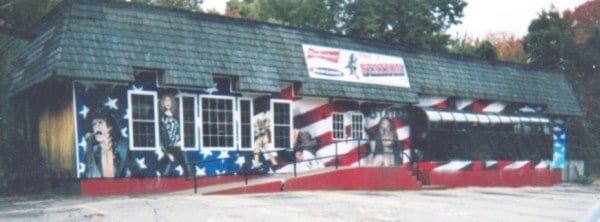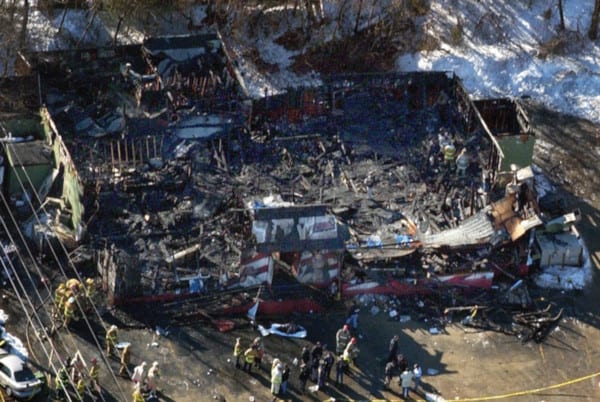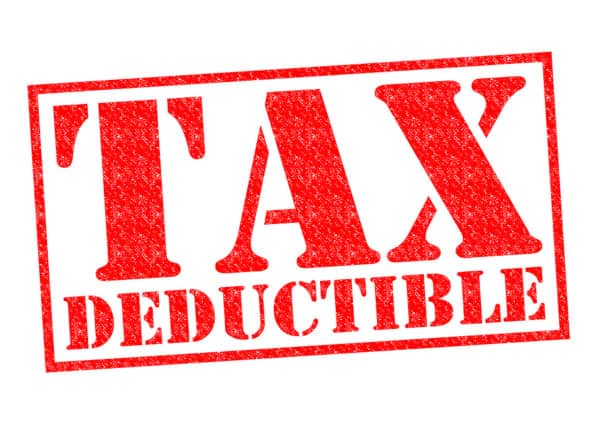The Tax Cuts and Jobs Act offered an unprecedented tax break for installing or upgrading sprinkler systems
The Tax Cuts and Jobs Act (TCJA) delivered a money- and potentially life-saving benefit to business owners in 2017: you could deduct the full expense (up to $1 million) of installing or upgrading a fire suppression system from your federal taxes every year. And the benefits don’t necessarily stop there.
In this blog, we explain who qualifies for these tax deductions and how to take advantage of the significant savings that they offer.
Fire sprinkler systems: where, when, and how they are required
There’s no denying that automatic fire sprinklers save lives, reducing the death rate by 81 percent and property damage by nearly 70 percent in buildings that suffer fires, according to research by the National Fire Protection Association (NFPA). But for some property owners, installation costs can be prohibitive, leading to the risky decision of going without fire suppression.
Generally, automatic sprinkler protection is required in most new buildings that exceed 5,000 square feet or renovated buildings that increase their total size to various square-feet thresholds specified in different model codes and local laws. Sprinkler systems are also typically mandated in buildings taller than 55 feet, townhomes containing more than two residential occupancy units, and self-storage facilities. Insurance policies often issue sprinkler system requirements as well.
Based on those rules, nearly every new commercial building is protected by fire sprinklers, from apartment complexes to office high-rises to hospitals. Existing buildings are hit and miss, and many are in a gray area where they aren’t required by law to retrofit until they serve a certain purpose or hit a certain size.
But even if a building doesn’t require fire sprinklers, that doesn’t mean that model codes and the law will stay that way. Various new state and local retrofit ordinances have been enacted that mandate retrofits of sprinklers in existing buildings, often after a tragic fire. The trend is pretty clearly moving toward installing sprinklers in most structures, making it a smart move to proactively take advantage of this tax break.
Tax reform aims to put fire suppression systems in more buildings
The TCJA incentivizes businesses to invest in life-saving fire protection systems by dangling a tax deduction that applies to installing systems in new buildings, upgrading existing systems, or retrofitting existing structures with systems. The incentive—which also includes security and alarm systems—is part of a broader effort in the new law to stimulate long-term economic growth by encouraging businesses to make capital investments.
Previously, the cost of commercial fire protection systems was capitalized and depreciated over a recovery period of 5, 7, 15, or 39 years. The length depended on such factors as system type, integration within the building structure, and whether the installation involved owned or leased property.
The new tax law allows many business owners to write off the full cost of fire protection systems up to $1 million as an expense in the tax year they were placed in service—making it possible to immediately recover the costs of the upfront investment.
Years of lobbying and a tragedy spurred the tax reform
For 14 years, advocacy groups such as NFPA, the National Fire Sprinkler Association (NFSA), and the American Fire Sprinkler Association (AFSA) have pushed for legislation that will incentivize the installation of fire protection systems in commercial and residential properties. Their efforts were championed by Congressman Jim Langevin of Rhode Island, whose district suffered the fourth-deadliest nightclub fire in history in 2003.
More than two-thirds of the 462 people crowded inside The Station nightclub in Warwick, RI were either killed or injured during the fire. It’s widely accepted that the lack of a fire sprinkler system was a major factor, enabling the fire to spread uninhibited with no way of buying valuable time for employees and customers to escape.
The fire was so devastating that, in its aftermath, NFPA set the standard for property owners to retrofit existing nightclubs, dance halls, and discotheques where the occupant load exceeds 100 with automatic sprinkler systems. And the International Fire Code (IFC) similarly mandated the retrofit of existing bars, nightclubs, and restaurants if the fire area where alcohol is consumed is over 300 occupants.
After years of spearheading attempts to pass a Fire Sprinkler Incentive Act, Rep. Langevin introduced fire sprinkler language in 2017 that was ultimately included in the Tax Cuts and Jobs Act.


TCJA fire sprinkler tax savings: Here’s how it works
Section 179 of the U.S. Internal Revenue Code has long allowed businesses to deduct the cost of certain property as an expense at the moment it is placed in service, rather than requiring it to be capitalized and depreciated on a year-by-year basis over its useful life.
Previously, qualifying companies could deduct most business-related equipment placed in service up to $500,000, including machinery, computers, software, office furniture, vehicles, and other tangible goods. But for the first time—and on an ostensibly permanent basis—the TCJA expanded the definition of Section 179 to include improvements to non-residential real property, including roofs; heating, ventilation, and air-conditioning property; fire protection and alarm systems; and security systems.
The TCJA also doubled Section 179’s dollar limit to a $1 million total write-off for every year of expense. That said, there is a cap. A business can spend a maximum of $2.5 million on a fire suppression system in a year; after that, the deduction phases out on a dollar-for-dollar basis and reaches zero at $3.5 million.
Thus, if you spend $2.6 million dollars—$100k over the cap—you would only be able to write off $900,000. Given these limits, the tax break is largely focused on small- to medium-sized businesses.
Both new and used equipment are now eligible for the deduction, and it can be applied to equipment that is financed or leased as well. And beginning this year, the increased limit and phase-out threshold will be adjusted for inflation.
To be clear: The tax break only applies to commercial structures and cannot be used for retrofitting or installing sprinklers in residential structures. Advocacy groups are still pushing for some sort of tax benefit that incentivizes residential installations.
Recovering this cost quickly frees up money for other important purposes and enables businesses to invest in sprinkler systems they might otherwise struggle to afford. Those who borrow money to pay for an installation can fully deduct the interest expense of the loan as well.
The benefit of bonus depreciation for sprinklers was accidentally left out of the law—but it may be on its way back
The recent law also temporarily raises bonus depreciation to 100 percent for qualifying expenses in Section 168(k). That means any business can deduct 100 percent of the cost of property placed in service after Sept. 27, 2017 and before Jan. 1, 2023 in the year it is purchased and put into use. Between 2023 and 2026, bonus depreciation is gradually reduced until it is phased out in 2027.
Bonus depreciation is generally taken after the Section 179 deduction—making it useful for businesses whose equipment purchases exceed $2.5 million.
But while TCJA backers intended to make qualified improvement property like fire sprinklers eligible for bonus depreciation, this portion of the law was accidentally omitted by a drafting error in the law. The House Ways and Means Committee is expected to address this mistake in a technical corrections bill, though it must pass in Congress before it’s official.
A bi-partisan bill was introduced in March to reinstate the language and make the change retroactive to Jan. 1, 2018. But since this new bill was introduced in the Senate and not the House, it’s really just a symbolic gesture meant to notify Congress that the Senate has bi-partisan support to get the mistake fixed.
That said, some components of a fire sprinkler system may still qualify for bonus depreciation if they are classified in certain ways. Consult a professional tax advisor to see what could apply.
Act now before tax law changes
NFPA research states that when automatic fire sprinklers are triggered, they effectively control 96 percent of fires. With the ability to fully deduct up to $1 million of the cost of a new or upgraded fire sprinkler system for each year of expense, the new tax code offers businesses an unprecedented opportunity to substantially minimize the risk of costly fire damage while immediately offsetting a large expenditure with equivalent tax savings.
Keep in mind, section 179 could change. As recently as 2015, Congress toyed with reducing the deduction limit to $25,000. The generosity of the TCJA increase gives businesses a strong incentive to install or upgrade fire protection systems now.
Are you looking to buy components for your building’s sprinkler system?
You can view our in-stock selection of components and accessories for commercial and residential systems, including commercial sprinkler heads, residential sprinkler heads, cover plates, gauges, valves, pipe hangers, supervisory switches, and other accessories.
Give us a call at 888.361.6662 or email support@qrfs.com if you have any questions.
This blog was originally posted at blog.qrfs.com. Check us out at Facebook.com/QuickResponseFireSupply or on Twitter @QuickResponseFS.



